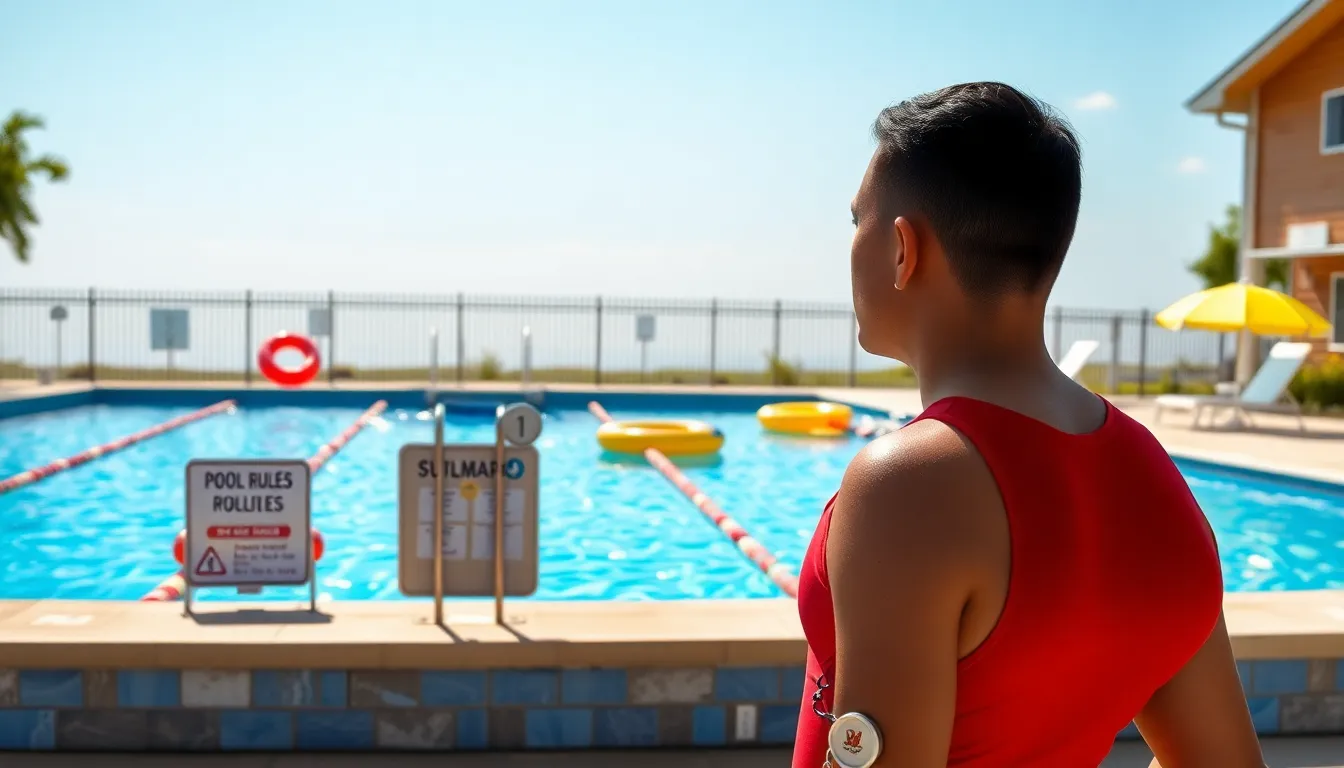When it comes to pool maintenance, high pH levels can feel like that one friend who shows up uninvited to your party—awkward and a bit too much. A pool with elevated pH can lead to cloudy water, skin irritation, and even make your expensive chemicals less effective. But don’t worry, turning your pool from a chemistry experiment gone wrong to a sparkling oasis is easier than you think!
In this guide, you’ll find practical advice that’ll help you tackle high pH levels like a pro. From simple adjustments to expert tips, he’ll navigate the murky waters of pool care with a splash of humor and a dash of expertise. So grab your floaties, and let’s dive into the world of pool chemistry! Your crystal-clear paradise awaits.
Table of Contents
ToggleUnderstanding High pH Levels in Pools
High pH levels in pools pose several challenges. Maintaining balanced water chemistry keeps pools clean and safe for users.
What Is High pH?
High pH occurs when the water’s pH exceeds 7.8. This alkaline state can lead to complications such as skin irritation and eye discomfort. Maintaining pH levels between 7.2 and 7.6 is ideal for swimmer comfort and efficient chemical performance. A pool with elevated pH can make chlorine less effective, reducing sanitation effectiveness.
Causes of High pH in Pools
Several factors contribute to high pH levels in pools. First, the use of alkaline sanitizers often raises pH significantly. Second, frequent addition of certain chemicals can push pH beyond the recommended range. High evaporation rates in warmer climates can lead to the concentration of minerals, increasing alkalinity. Additionally, tap water with high mineral content may contain elevated pH, impacting overall water chemistry. Regular testing can help identify and manage these causes effectively.
Effects of High pH on Pool Water

High pH levels in pool water create several challenges. Cloudiness, discomfort, and reduced chemical effectiveness emerge as primary concerns.
Impact on Water Clarity
Cloudy water often results from a high pH. High levels can hinder chlorine’s ability to sanitize effectively. Filtration systems, without adequate chemical balance, struggle to keep water clear. Algae and debris may proliferate in such conditions. Regular testing enables pool owners to monitor this parameter. Using pH-lowering agents helps restore clarity, ensuring the swimming environment remains inviting.
Effects on Swimmers
Swimmers experience discomfort due to high pH levels. Skin irritation may occur frequently, with many noting dry or itchy skin after swimming. Eyes also become sensitive, leading to redness or stinging sensations. High pH impacts the overall swimming experience negatively. Maintaining pH between 7.2 and 7.6 alleviates these issues. Adjusting chemical levels promptly ensures that all users enjoy a safe and pleasant swimming environment.
Solutions for Managing High pH
Managing high pH levels keeps pool water clear and comfortable. Effective strategies include testing frequently, making necessary chemical adjustments, and employing preventative measures.
Testing Your Pool Water
Testing pool water regularly ensures accurate pH readings. Use a reliable test kit or digital meter to check levels at least once a week. Target a pH range between 7.2 and 7.6 for optimal balance. Consider testing more often during hot, sunny weather or after heavy rain. Consistent water testing reveals trends, helping identify issues before they escalate.
Chemical Adjustments
Adjusting pool chemicals directly addresses elevated pH. Adding muriatic acid or sodium bisulfate lowers pH levels effectively. Follow the manufacturer’s instructions for application, paying attention to the recommended dosage based on pool size. After adding chemicals, allow adequate circulation before retesting. Timing of adjustments matters, as adding chemicals in the evening can prevent rapid evaporation from sunlight.
Preventative Measures
Implementing preventative measures discourages high pH from occurring. Regular pool maintenance helps minimize fluctuations in water chemistry. Using a quality pool cover reduces evaporation, which often contributes to increased pH. Regularly brushing pool walls and floors stops algae growth, keeping water clearer and reducing chemical demands. Finally, choosing low-pH sanitizers can help maintain balance, ensuring swimmers enjoy a pleasant experience.
Maintenance Tips for Balanced Pool Water
Maintaining balanced pool water involves diligent practices to ensure a healthy swimming environment. Implementing systematic measures helps address high pH levels effectively.
Regular Testing Schedule
A consistent testing schedule allows for precise monitoring of pH levels. Utilize reliable test kits or digital meters every week, particularly during high temperatures or after heavy rainfall. Testing water before adding any chemicals ensures accurate adjustments. This regular analysis assists in identifying trends in pH fluctuations, enabling timely intervention. Ideally, discrepancies need immediate attention. Failure to regularly test can lead to prolonged issues, impacting water clarity and swimmer comfort.
Importance of Filter Maintenance
Maintaining the pool filter significantly contributes to water quality. Clean filters capture debris and prevent contaminants from clouding the water. Regular backwashing and cartridge replacement keep the filtration system functioning optimally. A well-maintained filter enhances chemical distribution, further supporting balanced pH levels. Inspecting the filter’s performance often ensures consistent water flow and clarity. Neglecting filter maintenance can exacerbate existing water quality issues, leading to unnecessary complications in pool upkeep.
Maintaining balanced pH levels is essential for a clear and enjoyable swimming experience. By regularly testing water and using appropriate pH-lowering agents, pool owners can effectively tackle high pH issues. Implementing preventative measures and keeping up with filter maintenance will further enhance water quality. With the right approach, pools can remain inviting and safe, ensuring that swimmers enjoy their time without discomfort. A proactive strategy will transform pool care into a manageable and rewarding task.




